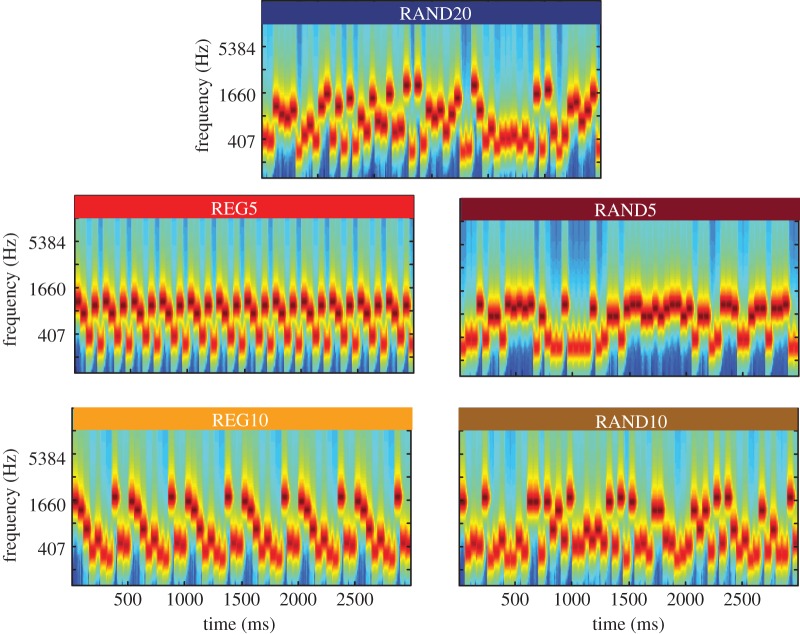Figure 1.
Example spectrograms of the RAND and REG stimuli used. RAND20 (top) contains all 20 frequencies from the pool, in random order. REG5 and REG10 (left) consist of a regularly repeating pattern of 5 or 10 tones, with frequencies chosen at random from the pool (REG15 was also used but not shown). For each REG stimulus, a matching RAND stimulus, consisting of the same frequencies but in random order, was generated. All stimuli were unique (never repeated) and generated anew for each participant.

